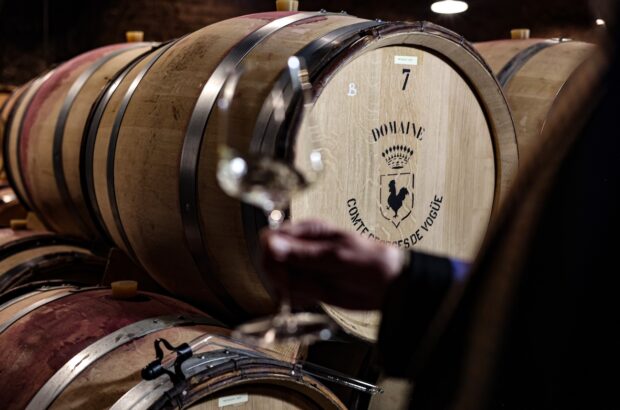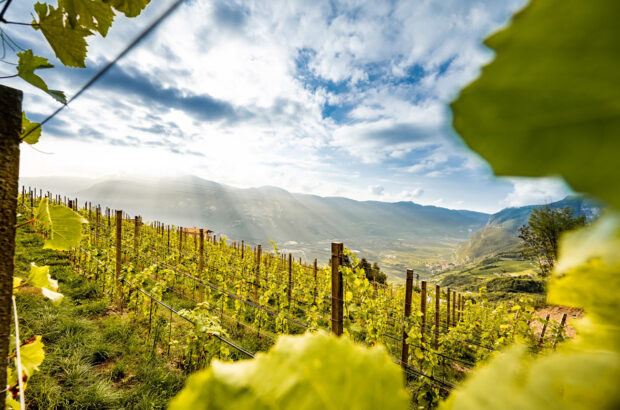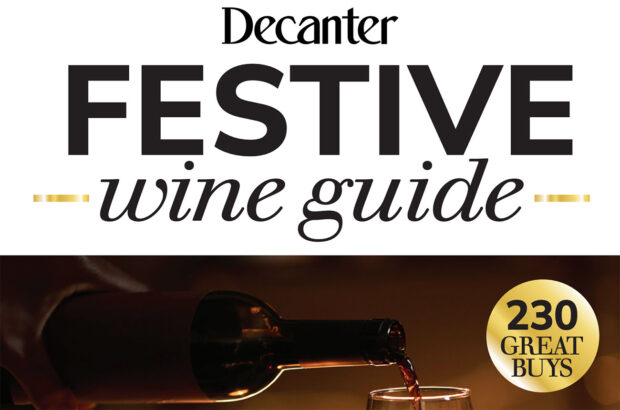It was in the ancient village of Apricale – like many in the Ligurian mountains, a kind of oozing honeycomb of stone – that I first came across the delicious concept of the albergo diffuso. A functioning hotel, in other words, whose rooms are scattered around different private houses in a village.
Village of Villa in Arroscia valley. Credit: Andrew Jefford
As I tasted and talked to locals about Vermentino, I began to suspect the notion should be extended to grape varieties, too. Is this a vitigno diffuso? Genetically, it’s a single variety; Pigato, Favorita and Rolle are all synonyms. The locals, though, claim that Pigato and Vermentino are far from identical. The leaves, they say, are a different shape (Pigato’s leaves are more deeply lobed than those of Vermentino); the buds are a different colour (Pigato’s are pink and Vermentino’s are green); and Pigato’s grapes are speckled in a way that Vermentino’s aren’t – hence its name (pigato means speckled in local dialect). Official statistics regard them as distinct varieties.
I contacted José Vouillamoz for the official genetic view. ‘This is a common question,’ he said, ‘especially for Italian producers who actually see and taste the differences between Pigato, Vermentino and also Favorita. We can safely say that they have the same DNA profile, meaning that they all originate from the same initial vine that grew from a single and unique grape pip. It doesn’t mean that they are 100% identical, though; there are some clonal differences and if we sequenced the whole genome of each clone we would see where those differences are. Over time, they have accumulated mutations which is why they look and taste different – just like Cannonau and Garnacha, or Tribidrag and Primitivo and Zinfandel, or indeed different clones of Pinot. Yet each is the same, single variety.’ As Fabio Corradi from the Ligurian Maixei co-operative loves to point out, humans and chimps are 99 per cent genetically identical, too.
Diffuse Vermentino is an adaptable and charming variety – the Mediterranean Chardonnay, in many ways, widely grown and usually happy near the shoreline of both coasts and islands. In Languedoc, it is used to add a spoonful of cream and a sprinkling of aniseed and fennel to blends, but it’s a starring white variety on its own in Provence. Côtes de Provence’s most underestimated wines, in my opinion, are its Rolle-based whites: filmy, soft wines of lamb-like gentleness – the finest tissue paper or silk chiffon rendered liquid. Perhaps you have to learn to make great rosé (a wine style born of understatement) before you can make white wine like this: undemonstrative yet utterly seductive, full of the soft scents of seeds and plants, plumped with pristine lees.
Liguria’s scenery is more dramatic than that of its Provençal neighbour, and its Vermentino white wines seem to share in that drama: less cream and less seed flavours; more sap, more vitality, and more orchard fruit. They often have lower alcohol (12% or 12.5%), despite being picked in mid-September or later. When high-grown in Dolceacqua, they can be sculpted, gothic, almost Riesling-like. Further east, in the valleys which lie inland from Imperia, they take on the weight, sappiness and chewiness of a top Pinot Bianco, Sylvaner or Grüner Veltliner. Head further east still into the Colline Savonese and they can have the poised rotundity of Pouilly-Fuissé and occasionally – given enough ambition with the skin maceration – something of the exoticism of a Viognier. Head right around the coast to Colli di Luni, hard by the Tuscan border, and there is a richer, almost Manseng-like fruit in the mix: a touch of pineapple, a squeeze of orange. Adding to this wonderful chameleon show is an ability to pick up and transmit a non-fruited earthy or stony spectrum, too, which lends the best of them real dignity.
Is there, though, a palpable difference between Vermentino and Pigato? Yes, but it may well be the filter of intent: those who produce both wines tend to contrive to make the Vermentino a lighter, fresher and simpler soul, while the Pigato is the vehicle of their ambitions, and gets all the cosseting. Little wonder that it’s deeper in hue, thicker on the tongue and more concentrated and perfumed in its fruit style. But a light Pigato and a richer Vermentino can overlap seamlessly.
Perhaps its best to let those who know them intimately describe the differences. ‘They should,’ says Filippo Rondelli of Terre Bianche, ‘share a hidden saltiness, drinkability and a kind of purity and elegance. Vermentino has more herbal and flower notes, and is a little lighter in body; Pigato is fruitier and spicier, and bigger-framed, sometimes with a hint of pine resin.’ Roberto Tozzi of Vis Amoris, who only makes Pigato wines, says that Pigato has an ability to age which marks it out, with more sappy fullness and more structure than a classic Vermentino.
The lesson, in truth, is the same as the one I wrote about on April 27th in relation to Rossese and Tibouren: the longer that a variety has been in a certain place, the less it seems to reflect ‘varietal’ characteristics and the more it seems to become an actor in the drama of terroir. I’ve always felt vaguely antagonistic towards variety synonyms, on the basis that they muddy our understanding, but perhaps I’ve been wrong: they have secret lessons about environmental adaption to teach us.
Leading Ligurian Vermentino and Pigato producers include:
Laura Aschero, Maria Donata Bianchi, Bio Vino, Bosoni, Lambruschi, Bruna (especially the old vine U Baccan Pigato), Costa de Vigne, Felce, Fontancota, Gajaudo, Giacomelli, Lupi, Il Monticello du Nemu, Rocche del Gatto, la Ghiaia, Conte Picedi, Rondelli, Le Russeghine, Terenzuola, Terre Bianche, Terre Rosse, Torchio, Vis Amoris.
Written by Andrew Jefford







